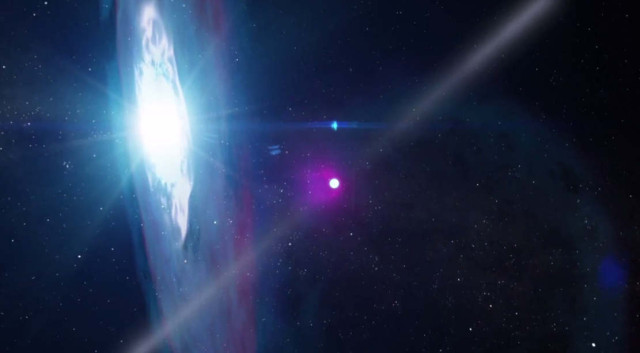Majestic fireworks in the our galaxy coming in early 2018, when a stellar remnant the size of a city, meets one of the brightest stars.
According to astronomers the cosmic light show will occur when a pulsar, discovered by NASA’s Fermi Gamma-ray Space Telescope, swings by its companion star. Scientists plan a global campaign to watch the event from radio wavelengths to the highest-energy gamma rays detectable.
The pulsar, known as J2032+4127 (J2032 for short), is the crushed core of a massive star that exploded as a supernova. It is a magnetized ball about 12 miles across, or about the size of Washington, weighing almost twice the sun’s mass and spinning seven times a second. J2032’s rapid spin and strong magnetic field together produce a lighthouse-like beam detectable when it sweeps our way.
The pulsar orbits a massive companion named MT91 213. Classified as a Be star, the companion is 15 times the mass of the sun and shines 10,000 times brighter. Be stars drive strong outflows, called stellar winds, and are embedded in large disks of gas and dust.
Following an elongated orbit lasting about 25 years, the pulsar passes closest to its partner once each circuit. Whipping around its companion in early 2018, the pulsar will plunge through the surrounding disk and trigger astrophysical fireworks. It will serve as a probe to help astronomers measure the massive star’s gravity, magnetic field, stellar wind and disk properties.
source NASA






Leave A Comment